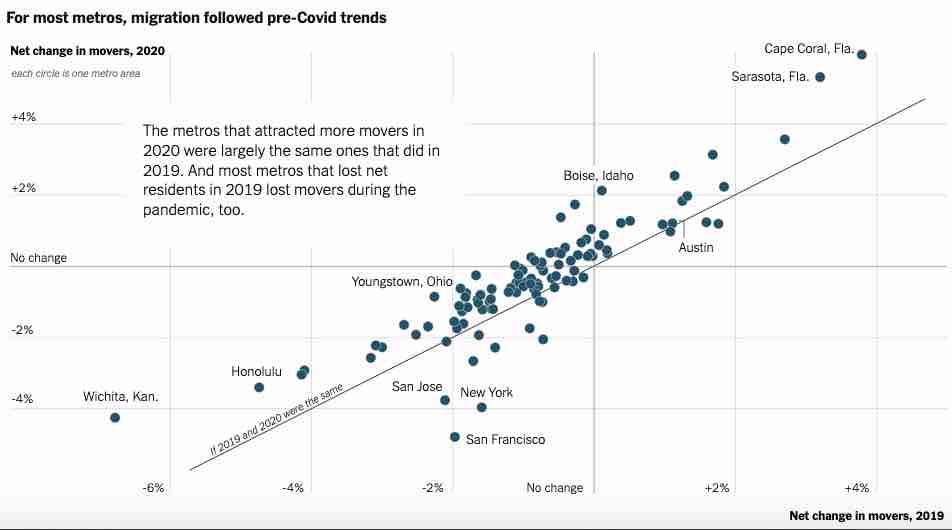The pandemic raised the possibility that more workers could move anywhere, potentially scrambling the map of booming and declining places in the American economy.
And new data shows that it did indeed appear to prompt an unusually large flow of urban residents out of New York and San Francisco, two regions with a high share of jobs that can be done remotely even after the pandemic is behind us.
But about 30 million change-of-address requests to the U.S. Postal Service in 2020 show that with these two very visible exceptions — and a few smaller ones — migration patterns during the pandemic have looked a lot like migration patterns before it. Some smaller regional metro areas and vacation hubs benefited. But in general, areas that were already attracting new residents kept attracting them. Those that were losing migrants lost more. And there are few examples, at least in the data so far, of previously down-and-out regions drawing people in.
In short, as disruptive as the pandemic has been in nearly every aspect of life, it doesn’t appear to have altered the underlying forces shaping which places are thriving or struggling. The graphic below shows that the metro areas that gained the most net movers in 2020 — or lost the most — are almost entirely the same as those in 2019:




